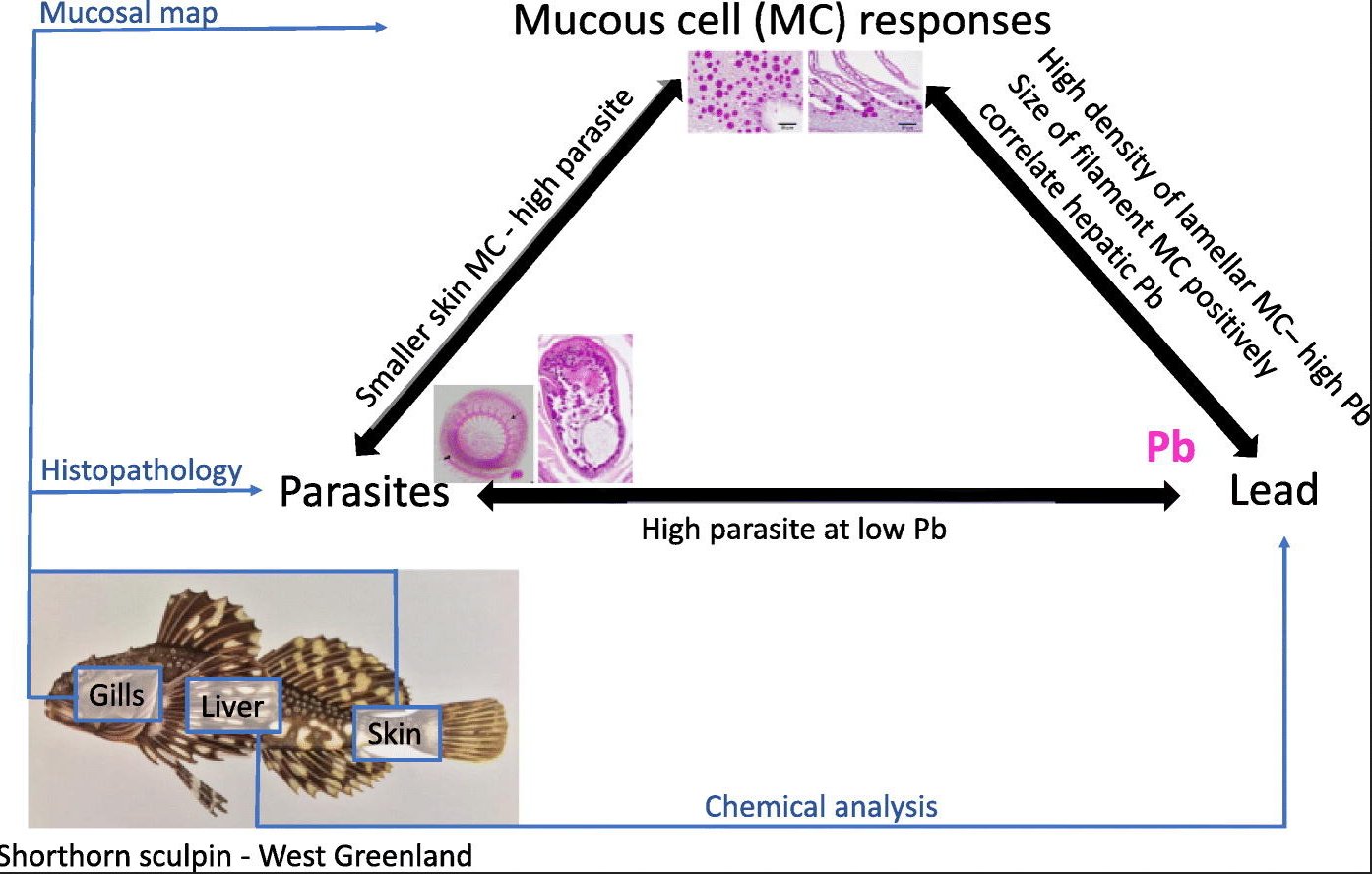Mucous cell responses to contaminants and parasites in shorthorn sculpins (Myoxocephalus scorpius) from a former lead‑zinc mine in West Greenland
New publication by Mai Dang, Karin Pittman, Lis Bach, Christian Sonne, Sophia V. Hansson, Jens Søndergaard, Megan Stride, Barbara Nowak

Abstract:
Previous studies of sculpins from the former lead (Pb) - zinc (Zn) mine near Maarmorilik, West Greenland, have shown that these fish are affected by heavy metal exposure from the mine. In this study, we applied mucosal mapping (a stereological method for mucosal quantification in fish) to uncover interactions between the host, parasites and heavy metal exposure (Pb and Zn) in shorthorn sculpins from the Maarmorilik mining site at a gradient of 3 stations. Skin and gill mucosal epithelia of shorthorn sculpins were significantly affected and reflected the exposure to environmental heavy metals and parasites. Size of skin mucous cells was significantly smallest in the sculpin from the station 3 where heavy metal contamination was lowest and the skin parasite load was highest. Gill filament mucous cells were largest and densest in fish from station 1 which was the most contaminated site. In gill lamellae the density of mucous cell followed a toxicity gradient and was significantly highest at the most contaminated station and significantly lowest at the least contaminated station. The persistent presence of toxic Pb and Zn levels in the sediment at the most contaminated station may have induced a small but measurable reduction in the surface area available for respiration and may have affected diffusion distance. The strong correlation between size of filamentous mucous cells and Pb concentrations in liver suggests that these cells can play an active role in reducing the somatic load of Pb in sculpin. We suggest that mucosal mapping can be used to assess effects of contaminant and parasite exposure in future environmental field studies.
